#Clarence G. Badger
Text

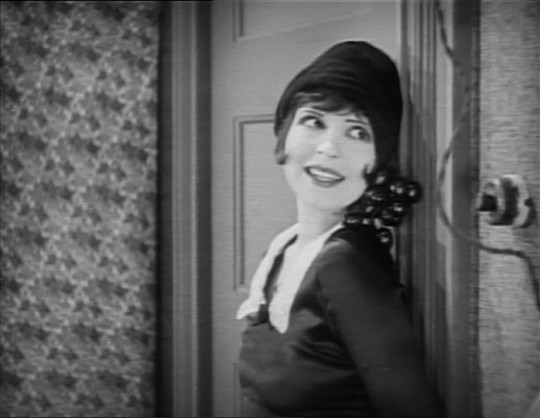

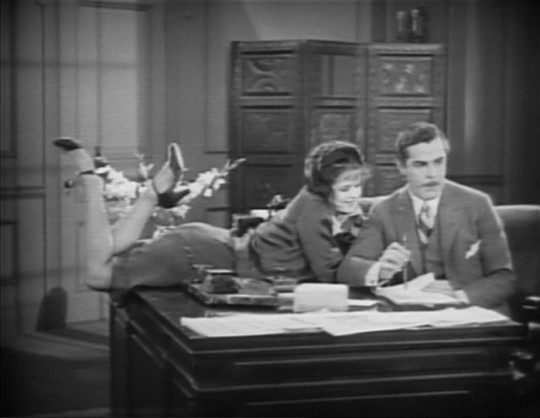




It (Clarence G. Badger, 1927)
60 notes
·
View notes
Text

Lucille Powers-Harrison Ford "Tres fines de semana" (Three weekends) 1928, de Clarence G. Badger.
3 notes
·
View notes
Photo

William Austin and Clara Bow in It (Clarence G. Badger, 1927)
Cast: Clara Bow, Antonio Moreno, William Austin, Priscilla Bonner, Jacqueline Gadsdon, Julia Swayne Gordon, Elinor Glyn, Gary Cooper. Screenplay: Hope Loring, Louis D. Lighton; Titles: George Marion Jr., based on a story by Elinor Glyn. Cinematography: H. Kinley Martin. Film editing: E. Lloyd Sheldon. Costume design: Travis Banton
Was Elinor Glyn's Cosmopolitan magazine story "It" really a sensation, or is that just hype? Odds are it was the latter, because Glyn, who has a cameo in Clarence G. Badger's film It, billed as "Madame Elinor Glyn," was a master self-publicist. "It" gets several definitions in the course of the film, all of which are really just a relabeling of what has always been called "sex appeal." In the end it boils down to "whatever Clara Bow had." One of those definitions, delivered by the Madame herself, is "Self-confidence and indifference to whether you are pleasing or not," which actually doesn't fit Bow's character, Betty Lou, who is never indifferent to whether she is pleasing the object of her attentions, Antonio Moreno's Cyrus T. Waltham. She even flings herself on his desk to flirt with him. It is really just routine rom-com stuff: Girl spots boy, girl lands boy, boy makes a premature move and gets slapped for it, girl rejects boy because he thinks she's an unwed mother, boy pursues girl but she rejects him again when he wants to make her his mistress instead of his wife, girl concocts revenge plot that goes awry so that at the end girl gets boy anyway. Today, It is mostly a rather creaky relic whose interest lies mainly in its display of Bow's abundant charm and comic finesse and in the appearance of Gary Cooper in an uncredited bit as a newspaper reporter -- he barely even gets a foot in the door in the film. The credited director, Clarence G. Badger, had a long and undistinguished career, and even though some of the film is said to have been directed by Josef von Sternberg, it would be hard to single out his contribution. Moreno, the leading man, is stuck with an unfortunately fluffy mustache, and the comic support by William Austin is marred by the fact that the orthochromatic film stock turns his blue eyes almost white, making him look more than a little creepy. The climax takes place on a yacht called -- get it? -- the Itola, which I think was originally the Capitola but had its first syllable lopped off for the sake of the joke.
1 note
·
View note
Text



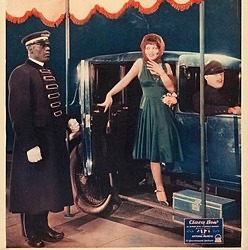
IT, directed by Clarence G. Badger and Josef von Sternberg, and starring Clara Bow, hit U.S. theaters on February 15, 1927. #OnThisDay also pictured co-star Antonio Moreno.
26 notes
·
View notes
Text

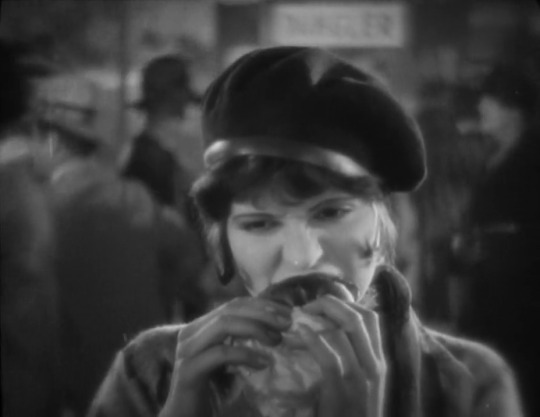
It (1927) dir. Clarence G. Badger & Josef von Sternberg
2 notes
·
View notes
Text





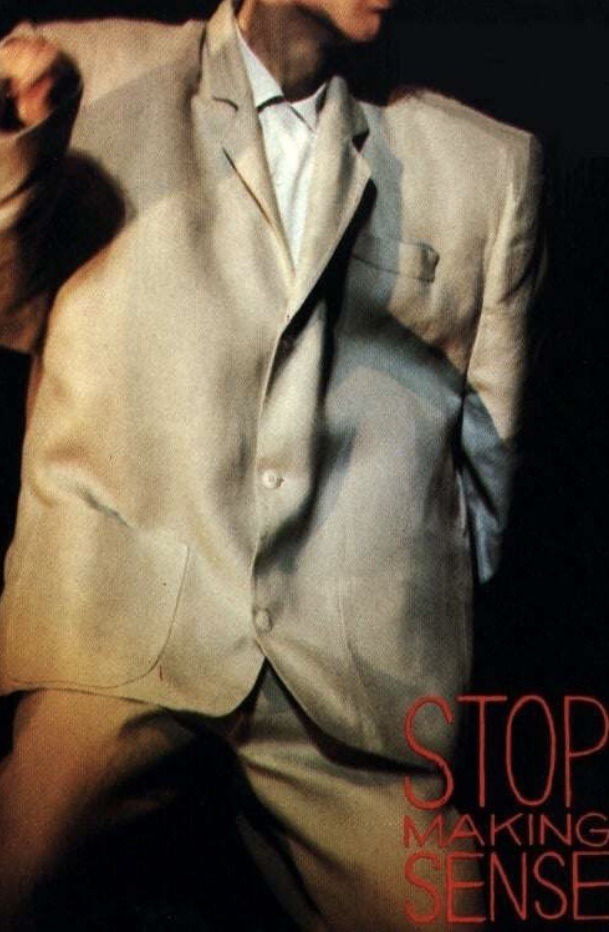
*️⃣ fave 🆕2️⃣ me films of September 2023 *️⃣
🎦 part 2️⃣ in no particular order: Rapsodia Satanica (1917) dir. Nino Oxilia / It (1927) dir. Clarence G. Badger / Linnea Quigley’s Horror Workout (1990) dir. Kenneth J. Hall / The Virgin Suicides (1999) dir. Sofia Coppola / The Adventures of Baron Munchausen (1988) dir. Terry Gilliam / Stop Making Sense (1984) dir. Jonathan Demme 🎦
#mine#diary#film diary#Rapsodia Satanica#Satan’s Rhapsody#It#It 1927#Linnea Quigley’s Horror Workout#Linnea Quigley#The Virgin Suicides#The Adventures of Baron Munchausen#Stop Making Sense#Talking Heads#movie poster
0 notes
Text
Finding the First Gay Kiss - Diary of a Big Ole Gay 11.20.22 Part 2
ok ok I guess I know get to actually tell you what I watched yesterday.

Mabel's Blunder (1914) dir. Mabel Normand
umm you read that correctly this was a movie she directed and acted in what a bad bitch. For context Mabel Normand was another comic actor for keystone who plays her own comedy character in the two reel shorts including Fatty Arbunkle and Charlie Chaplin
In this one Mabel is a securatary at her beau office also his dad might want to fuck her??? debatable. Anyway she walks out of the office for a sec and pops back in to find her boyfriend KISSING SOME HUSSY... ON THE MOUTH!
she then proceeds to do what any rational person would do and switch clothing with her twin brother of course so that she can stalk her boyfriend with this GOSH DANG KNEE SHOWING TROLLOP.
also they make a point of chanign behind a screen because they resepct others boundries.
Let me say that there drag is absolutely awful consisting of long coats and gendered hats

(your not butch unless you have a newsboy hat that will ultimately be ripped off for a wig reveal)
there is absolutely no gay kissing and the worst part. THE HUSSY WAS HIS SISTER!!! HE WAS KISSING HIS SISTER ON THE MOUTH LIKE A LOT. which girl like you have bigger problems.

The Danger Girl (1916) dir. Clarence G. Badger
so this one is weirdly enough also about a women dressing butch to get rid of a hussy, the term they use is vamp and also thats a old timey way of saying femme fatale apparetnly.

(fangfuck me vamp mommy)
the plot is kinda hard to follow but it actually is quite fun you have Gloria Swanson as "The Danger Girl" and there is honestly just a lot of 1910s butchness I'm talking women in riding habits women riding cars the whole kit and kaboodle. At some point she decides to dress up in full suit and tails and just fucking slays. The Vamp wants to get that dick and go she is smitten. A variety of shenigans occur and a lot of the jokes are subtle but rather charming it was cute. Also the Vamp trys to give her a little kiss but only manages to get a peck on the cheek.
Well Next up on our list is a bunch of D.W. Griffith and another film by Die Asta so it might take me awhile to get it watched.
0 notes
Video
Lila Lee by Truus, Bob & Jan too!
German postcard by Ross Verlag, Berlin, no. 5587/1, 1930-1931. Photo: National Film / Warner Bros. Probably publicity still for Murder Will Out| (Clarence G. Badger, 1930).
Lila Lee (1901-1973) was a prominent American screen actress, primarily a leading lady of the silent film and early sound film eras.
#Lila Lee#National Film#Warner Bros#1920s#Orientalism#AMerican#USA#Hollywood#Vintage#Vedette#Postcard#Postkarte#POstale#Postkaart#Postal#Picture#Cinema#Carte#Cartolina#Cine#Card#Carte Postale#Celebrity#Costume#Film#Film Star#Movies#Movie#Movie Star#Muet
6 notes
·
View notes
Photo

280 notes
·
View notes
Photo
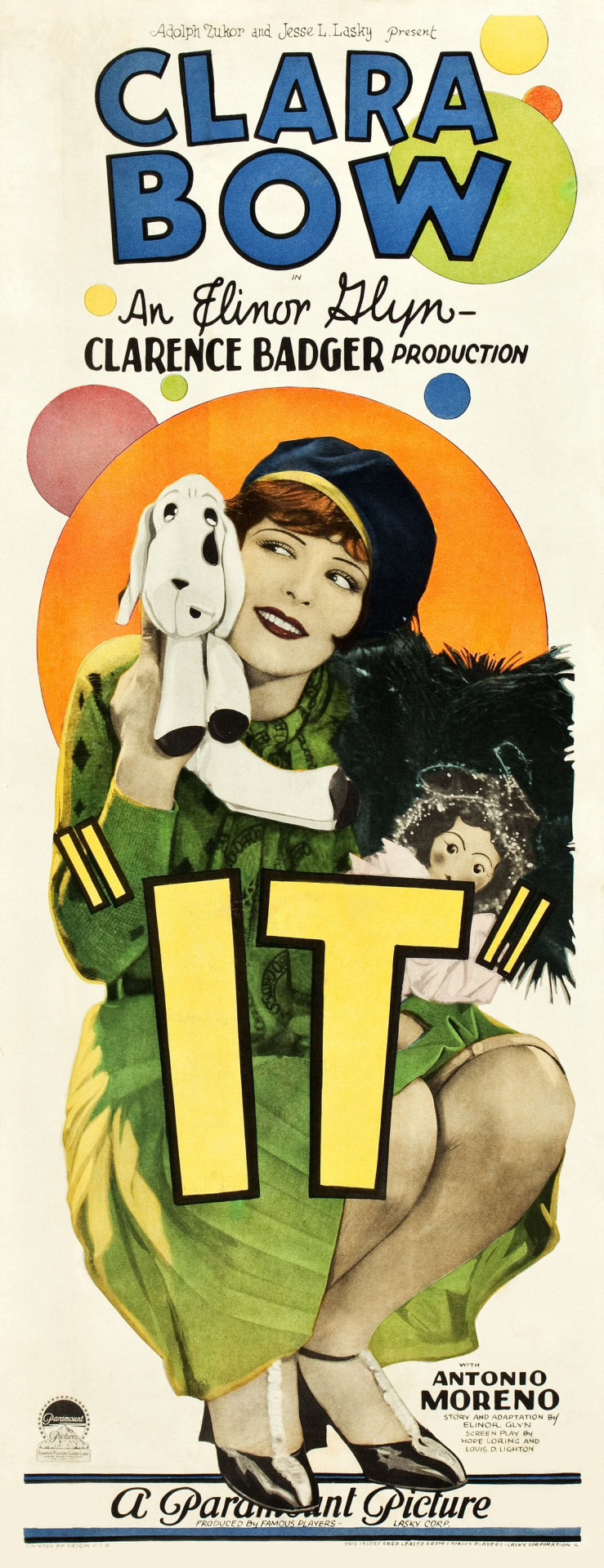
It (1927) Clarence G. Badger
October 5th 2019
#it#1927#clarence g. badger#clara bow#antonio moreno#william austin#priscilla bonner#jacqueline gadsden
13 notes
·
View notes
Text

Clara Bow-Claude King "Red hair" 1928, de Clarence G. Badger.
5 notes
·
View notes
Text
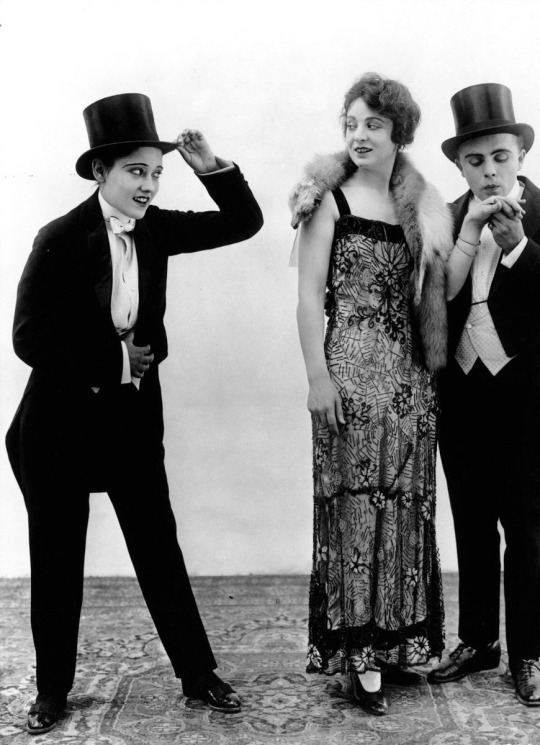
12 notes
·
View notes
Text

Peggy Wood and Will Rogers in Clarence G. Badger’s ALMOST A HUSBAND (1919)
12 notes
·
View notes
Photo
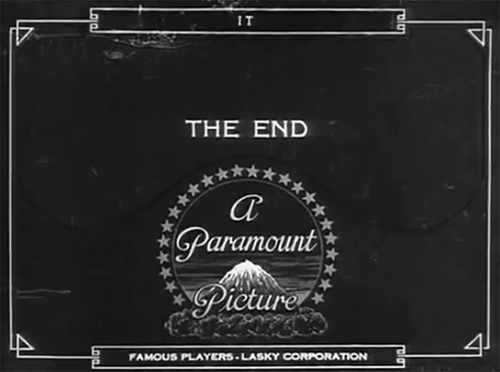
It
Clarence G. Badger
USA, 1927
#It#1927#Clarence G. Badger#The End#gif#1920s#silent film#USA#Famous Players-Lasky#Paramount Pictures
3 notes
·
View notes
Photo
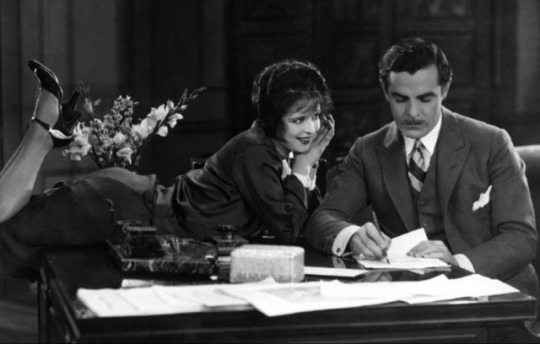
It (1927)
Sexuality in classic Hollywood movies tends to be misunderstood. The steamiest films are the ones that tend not to sell themselves on then-saucy themes – think early romantic comedies by Ernst Lubitsch and films like Gun Crazy (1950). The ones that generate the most noise regarding their depiction of sexuality or sex appeal are usually quite tame. Such was the case for 1953′s The Moon Is Blue (for its use of words like “virgin”, the film was banned from Boston, Memphis, Maryland, and Kansas), as is the case for the subject of this review – Clarence G. Badger’s It. As a vehicle that made Clara Bow the “it girl” of 1927, It is a film designed to strike terror into coulrophobic audiences with its relentless pace and outstanding child acting. You’ll never see Albert Lamorisse’s The Red Balloon (1956, France) the same way ever again! Oh wait, that’s some other movie!
Badger’s It, starring Clara Bow, is based on Elinor Glyn’s 1927 serialized story from Cosmopolitan magazine (Cosmo was a literary-political magazine before the 1960s, similar to The Atlantic) and is adapted by married screenwriters Hope Loring (1927′s Wings) and Louis D. Lighton (Wings, producer on 1937′s Captains Courageous). Glyn, an author of female erotic fiction and who campaigned against the idea of sexuality as a taboo conversational subject, introduced the concept of “it” in this film – which Paramount paid $50,000 for (almost $725,000 in 2018′s USD; it’s one thing to buy the rights to a short story, it’s a stranger thing altogether to purchase the rights to a concept). What is “it”? Well, it depends on when you asked Ms. Glyn. Glyn did not keep her definition consistent in her writing, interviews, or in this film adaptation. But, broadly speaking, “it” can be sex appeal, or this definition as written in Cosmopolitan:
That quality possessed by some which draws all others with its magnetic force. With 'It' you win all men if you are a woman and all women if you are a man. 'It' can be a quality of the mind as well as a physical attraction.
Or perhaps this one of four different explanations from the film’s intertitles (Glyn makes a cameo appearance when she states the following):
Self-confidence and indifference as to whether you are pleasing or not – and something in you that gives the impression that you are not all cold. That's "IT"!
Whatever the hell “it” was – and I’m guessing you, the reader, are fatigued by discussion of “it” by this point (in modern, meme-y parlance, perhaps “BDE” will be more understandable for younger readers) – Clara Bow has it in excess for this film. She meets all the discussed criteria for Glyn’s concept, except for an important aspect. I am not certain that Bow’s character, Betty Lou Spence, has the “quality of mind” requisite for “it”. Given the film’s seventy-two-minute runtime and a silly adapted screenplay by Glyn herself, her character is never given the development necessary for the audience to believe that this is not just another cute Hollywood romantic comedy with a whirlwind romance that we forget about the next day. And that is exactly what It provides: a lackadaisical plot, cardboard characters, and Glyn’s wildly embellished and wooden writing style.
Betty Lou Spence (Bow) works in a department store in New York City, and she instantly crushes on the new manager, Cyrus Waltham, Jr. (Antonio Moreno; what a pretentious name that is for a character). But Cyrus is in romantic cahoots with socialite Adela Van Norman (Jacqueline Gadsden) and he and Betty are separate by several rungs of socioeconomic class. Meanwhile, Cyrus’ friend Monty (William Austin) is interested in Betty and shenanigans resembling screwball comedy start from there. Also important to It is Betty’s roommate, Molly (Priscilla Bonner), who is unemployed, ill, and is attempting to take care of her newborn. Both women are struggling financially, but this is deemphasized after a certain point. The film’s conclusion arrives quickly in an open-sea incident that was executed with less humor but more effectively in a film like Overboard (1987).
Going into It, what I feared was that Badger and Glyn might depict Bow’s character as a gold-digger willing to throw herself onto any fellow she might be interested in. An unwanted advance from Cyrus after an otherwise wonderful date at Coney Island elicits this from Betty: “So you're one of those Minute Men – the minute you meet a girl you think you can kiss her!” She pushes, wrestles him off, and learns that Cyrus is “crazy” about her. Though too many films of classic Hollywood, the Hollywood of today, and popular culture in general glamorize individuals being “crazy” about someone else and showering that someone else with fancy gifts and experiences, Betty knows that what Cyrus is offering is something to avoid. As starved for character development as It is, it is Betty’s independence and need for mutual respectability that quells some of the film’s contradictory messaging. This is a lady who wants glamour and life’s niceties, yes, but disposing her values and getting there on the fawning patronage of a man is not an option.
Does Betty have much of a life outside of preparing for and playing romantic games, however? Can she comprehend that enduring love needs no games or flightiness? We do not see much of this, as It ratchets its charms to maximum. Fitting too easily into the trope of the hardworking, cash-strapped Woman of Morals, Betty shows no signs of ignobility. Physical and situational gags – especially in the film’s final scenes – are present. One of the funniest moments is when Betty is in a French restaurant, the menu is entirely in French, and asks for the “same” as her date. It adds to her character with subtlety and believability. Yet there are narrative distractions, too, mostly surrounding the subplot around Molly’s baby. Cognizant that this subplot results in one of the film’s final laughs, it still feels too forced and hackneyed to add to whatever the film is trying to express (that those who have “it” are never afraid to be themselves?... if so, Betty’s idea to masquerade herself as an upper-class debutante has little to do with having “it”).
No matter one’s reservations with It, Clara Bow’s performance is star-making material in any decade. The personification of a fun-loving woman from the Jazz Age, Bow is spirited in this production where she received little interference from Badger or heavy-hitting producers Adolph Zukor, Jesse L. Lasky, and B.P. Schulberg. One drawback to Bow’s outstanding charisma is the film’s and Bow’s self-awareness of the concept of “it”. Perhaps Elinor Glyn might disagree with me, but someone who has “it” must traverse the boundary between using and abusing “it” (okay, enough of this damn discussion). At times, it feels like her character is embodying the latter – detracting from a tremendous, fun as hell performance.
Following It, Clara Bow became Paramount’s most important contracted star. Too many of the films made at her peak are now lost films, and Bow – despite having a Brooklyn accent that neither executives nor audiences objected to – did not make the transition to talkies. Bow’s preferred acting style, heavy on physical gestures, made the actress dislike synchronized sound productions. She remained popular at the box office, but she retired from acting following a two-film contract with Fox that expired in 1933.
Today, It should be viewed as Clara Bow’s true introduction to movie audiences when it came out – popularizing a concept that, for whatever purposes helpful or harmful it serves, any cultural consumer is at least superficially aware of. For those cultural contributions, It was inducted into the Library of Congress’ National Film Registry in 2001, alongside fellow class members Jaws (1975), Planet of the Apes (1968), and The Sound of Music (1965). As a predecessor to the screwball comedies of the 1930s, It should probably be seen after having viewed some of those aforementioned comedies. Very little separates It aesthetically from other late 1920s silent films, as this film can best be appreciated for what it is: a marker of where American society was at a given time and a decent character piece.
My rating: 7/10
^ Based on my personal imdb rating. My interpretation of that ratings system can be found here.
#It#Clarence G. Badger#Clara Bow#Antonio Moreno#silent film#William Austin#Priscilla Bonner#Jacqueline Gadsden#Elinor Glyn#Josef von Sternberg#Adolph Zukor#Jesse L. Lasky#B.P. Schulberg#TCM#My Movie Odyssey
4 notes
·
View notes
Text
Day 3, 2020 - It
It – 1927 – Clarence G. Badger (Josef von Sternberg uncredited)
(Pre-Hays Babes)
“Him? He couldn't even give birth to a suspicion.” – Betty Lou

Betty Lou (Clara Bow) is a shop girl trying to make her way in the big city. She’s trying to do something to distinguish herself and stand out from all of the other dames behind the lingerie counter – particularly to Cyrus T. Waltham, the rich but naïve man who owns the department store.

Betty Lou happens upon Cyrus’ best friend and confirmed bachelor Monty who takes a shine to Betty Lou. Ya see, Monty has become obsessed with figuring out who around him has “It”. Everyone has been thinking about “It” ever since pop culture author of the day Elinor Glyn[i] had everyone chasing after that elusive quality she branded:
Self-confidence and indifference as to whether you are pleasing or not - and something in you that gives the impression that you are not all cold. That's "IT"!
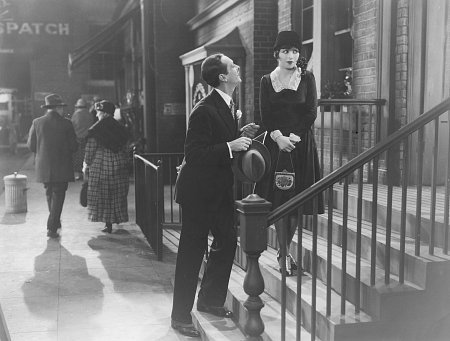
Monty sees himself as an expert “It” spotter; he’s sure that Betty Lou has it and knows Cyrus does not. Monty decides to invite Betty Lou to a fancy party for swells, in the hopes her it rubs off on Cyrus.
Betty Lou is trilled at the chance and takes it, but she’s a gal of meagre means. She decides to remake the dress she has on to suit the party elite and asks Molly – a single mom that lives in the same building – to help her sew.

The dress works out great and Betty Lou gets his attention.
Things are going along swimmingly[ii], until a rumour gets circulated about the department store that Betty Lou has a baby she’s hiding. Cyrus starts to keep his distance. But it’s all a big misunderstanding because they’re confusing Molly with Betty Lou, and Betty Lou and Cyrus get engaged on his yacht.

It’s the same rom-com formula we see today: poor girl/rich guy; sparks; misunderstanding; truth is revealed; ENGAGED! Just replace Betty Lou with Kate Hudson or Rachel McAdams and Cyrus with Matthew McConaughey or Ryan Gosling.
I had been curious to see a Clara Bow film as she’s one of those performers who I had known only through photographs – those heart shaped lips and huge eyes – and reputation: the epitome of a flapper baby and an early silver screen sex symbol. It didn’t hurt that that she’s referenced in a Prince song[iii]. It helped with the intrigue.

What the movie allowed me to see was how charming and funny she in fact was. The film is packed with cheeky dialogue[iv] and is a little gem.

__________
YouTube: https://youtu.be/S4MOQSRC_bM
__________
NOTES:
[i] Like, Candace Bushnell, or an Instagram influencer
[ii] Or maybe they aren’t. I’m eliding some things.
[iii] “Condition of the Heart” on the Around the World in a Day album by Prince.
[iv] Note, this is a silent film. I’m talking title cards here.
#filmpenance#film penance#Black and White#it#clara bow#1927#silent film#silent movie#pre hays code#flapper#movie review#Film Review#Lent#catholic#filmpenence2020#filmpenance2020#clarence g. badger#josef von sternberg#rom com
0 notes